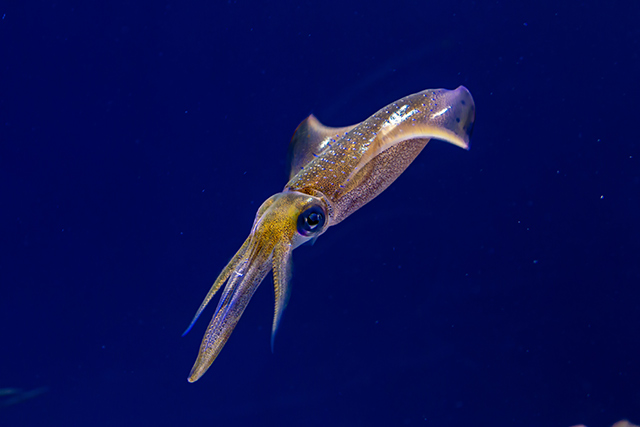
Scientists have designed a squid-like robot with potential scientific and military applications, thanks to its high-speed, quiet propulsion techniques.
Physicists from the University of California, San Diego based the design on the unique and efficient swimming strategy of squids and other cephalopods. It’s made of smart materials that make them difficult to detect, which is why it’s an ideal weapon for military reconnaissance. On top of that, the robot has a low environmental footprint.
The researchers are currently building a prototype of the model, which will see fluid dynamics, smart materials and other high-tech mechanisms seamlessly integrated into one device.
They detailed their findings in the journal Physics of Fluids.
Squid-inspired robot is fast, environmentally-friendly
Cephalopods swim in intermittent bursts powered by jet propulsion. The researchers used this form of locomotion and developed 2D and 3D numerical simulations to mimic its physical mechanisms and fluid mechanics. When swimming, the soft-bodied machine sucks water into a pressure chamber and ejects it, sending it into motion.
With such a propulsion technique, it can reach impressive speeds and be used as a propeller of an underwater vehicle. Moreover, the squid-like device can monitor water quality by having it test water samples as it swims. It’s also more environmental-friendly as the researchers designed the robot with smart materials in mind.
The team noted that there’s still some finetuning needed. For one, their current design is unable to maintain speeds that last for more than a few cycles due to turbulence and instabilities. But they’re working on ways to overcome this. In fact, they’re currently working with an interdisciplinary team to build a prototype of the mechanical device that can perform a wider range of movements.
“This project will combine fluid dynamics, control, smart materials and robotic design,” said co-researcher Qiang Zhu.
Zhu hopes that their study spurs more sophisticated modeling and experimental studies that will develop robots similar to their aquatic device.
Missile defense system based on dragonflies
The team’s robot is not the lone technology inspired by animal behavior. One study, presented at the International Conference on Neuromorphic Systems in Tennessee, explores how mimicking dragonflies can be used to improve missile defense systems.
Dragonflies may be tiny creatures that appear harmless at first glance, but they’re very efficient predators. These insects catch their prey more than 95 percent of the time, making them one of the deadliest hunters in the animal kingdom. Furthermore, their reaction time is merely 50 milliseconds; by comparison, blinking takes about 300 milliseconds.
For those reasons, computational neuroscientist Frances Chance of the Sandia National Laboratories is interested in studying the minuscule brains of the insects. Her mission is to make military technology more efficient at intercepting objects in flight. She recently developed computer algorithms designed to mimic the way a dragonfly processes visual information while hunting. The algorithms were recently used in previous simulations, which showed that artificial dragonflies, in a simplified virtual environment, successfully caught their prey.
“I try to predict how neurons are wired in the brain and understand what kinds of computations those neurons are doing, based on what we know about the behavior of the animal or what we know about the neural responses,” she said. (Related: U.S. missile defenses rendered totally obsolete by Mach 10 hypersonic missile developed by China.)
Like the brain, interception techniques used in missile defense systems are computation-heavy. By using input from dragonflies’ brains, Chance can develop a new computational model for a smaller, lighter and more efficient defense apparatus.
MilitaryTechnology.news has more on technology concepts based on animal behavior.
Sources include:
Please contact us for more information.














